Don't wanna be here? Send us removal request.
Text
Disaster Risk Reduction and Management (Module 4)
.“It wasn’t raining when Noah built the ark.” -Howard Ruff
I was captivated by this quote with connection to our Module 4. Aside from the spiritual context, this means that preparedness is really important to one’s safety and betterment. In the Bible, people laugh at him for preparing to nothing. But at the time of flood, people were crying and begging just to get inside the boat. That’s similar to being prepared to natural calamities and hazard disasters that we could face. It is essential that we must be ready knowing the unknown in the future.
Last time, we were asked to do a module activity concerning the disaster risk reduction and management of our barangay. We were asked to interview an barangay official and to assess the surroundings. Below are the insights of my experience.

Brgy. 471, Barangay Hall
Hazard Identification
The calamities that went through the barangay for the records are the following:
Fire (Latest was from last year at Antonio St.)
Typhoon (Typhoon Ondoy at 2009 was the reported strongest from the past years)
Flood
Earthquake
With regards to their source information, they rely on TV and radio news, forecasts from local organizations like DOST, PAGASA, and NDRRMC. They are also tuned in to social media incase of danger alerts by legitimate accounts. She said that the local government is always updated to that.
In terms of how frequent do these calamities happen:
Fire. Not much of reports lately but latest was last year.
Typhoon. According to her, it occurs at about 2-5 times a year in the area.
Floods. The latest was 5 years ago. Things improved when they started to elevate the streets 4 years ago.
Earthquakes. The interviewee wasn’t sure but she said that many instances happened.
Vulnerability, Elements and People at Risk Assessment
She honestly said that the whole area is at high risk of dangerous elements. In terms of fire, it is at high risk because it is composed of buildings that has cooking areas with it like the dormitories, restos and other establishments. Speaking of earthquake, all are still at high risk since the area are full of tall, overcrowded buildings. She mentioned that the most dangerous place is at Juaning Street. It has tall buildings on opposite sides and has narrow passageway making hard to escape in times of calamity.


Juaning Street
All are no exemption to these different dangers. Students, business persons and residents are affected and even their belongings, jobs and studies could be compromised as well. It is given since the barangay is an ‘active’ and 'busy’ one compared to the setting of other barangays.
The whole area is not safe, she admitted. The safe place to be at in times of calamity would be the UST Open Field. It is according to their DRRM plan as an evacuation center and the said university is aware of it.
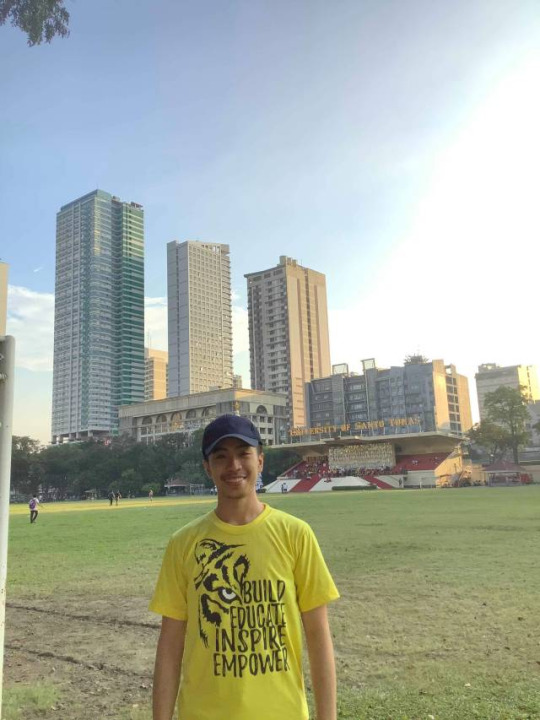
UST Open Field
As a part of a community, we must do our own responsibilities for the betterment of each one. The barangay official said that the challenge they faced in growing as a community was the diverse, temporary residents of the area. Half of the population live there only for purposes like studying and business. With that, information dissemination and cooperation is difficult to achieve.
Capacity and Disaster Management
The BDRRMC (Barangay Disaster Risk Reduction and Management Council) led by the Kagawad with the help of the Chairman, has couple of ways to help alleviate disasters which are the following:
Information Dissemination
Training (First Aid)
Seminars
Emergency Task Force
Budget Allocation for Safety Equipments
Earthquake and Fire Drill (Done every quarter of year)
They have various items like megaphones, talking radios, first-aid kits and many more useful in times of emergency. They also have array of people whom they maintain like the task force rescue team, first-aid practitioners and other barangay officials ready to help in various operations.
Community Walk
Hazardous places
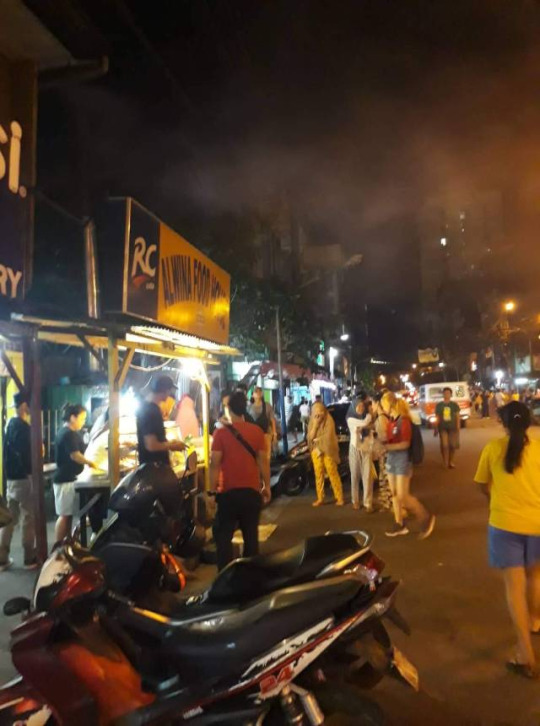
These are the usual eateries that has grilling stations and cooking areas. This could be a potential cause of fire that can spread especially that the buildings nearby are close to each other.
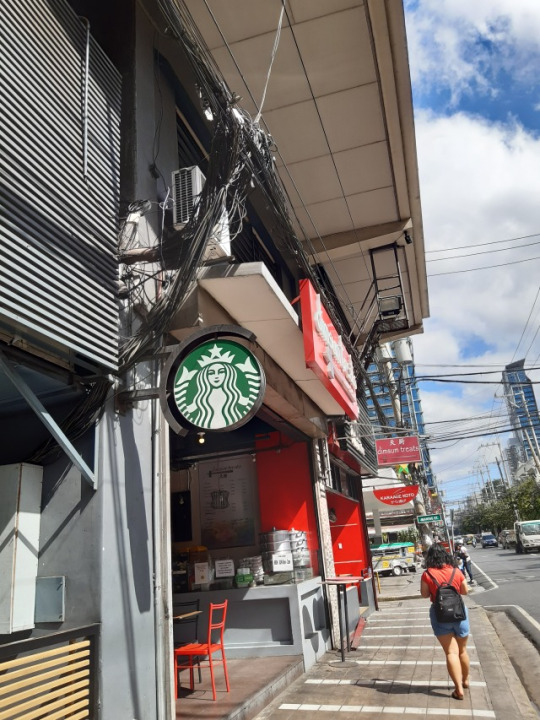
Here is a picture of an example of tangled city wires which is not safe. It could expose residents to possible electrocution and worst, death. There are actually instances like that within the area.
Safest Place
As what I’ve stated above, UST Open Field is the safest place on the area.
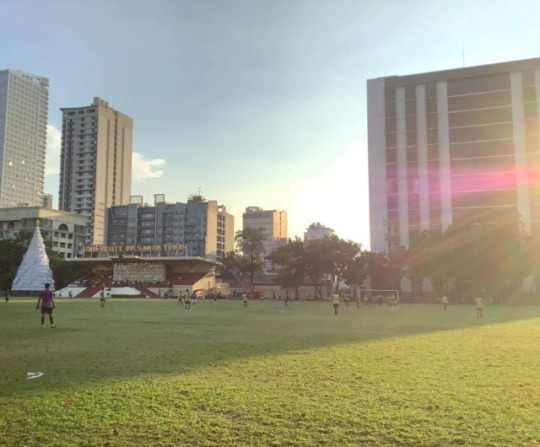
UST Open Field
Here is a link of pictures I got from Tomasino Web Facebook Page regarding of the UST Open Field as safe place during an earthquake last Septebmer this year.
Best Practice

One of the things that strucked me is the spirit of 'bayanihan’. I saw couple of men pushing a metal staircase then, they altogether helped to fix the broken small street light.
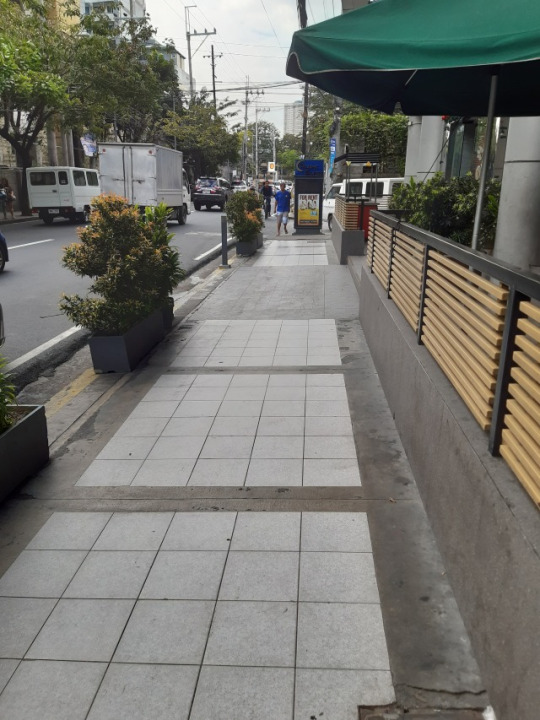
I also observed how clean the sidewalks are along the street. This just simply reflects the discipline of the residents to always keep the surroundings neat.
Reflection, Synthesis and Analysis
There are a lot of hazards present our in barangay just like the other places. Tall buildings, city wirings, cooking areas are just some of the hazards present in the area. The whole barangay is said to be at high-risk at some types of disaster like fire and earthquake. Amidst of this, there are still safe places around like the UST Open Field that could be a place of safety. With regards to this, there are certain measures the barangay officials do, like maintaining their rescue teams and conducting disaster drills. Though, it is not only them that should take part. It is actually the whole community that needs to take action. We all must focus on cooperating to each other amidst of diverse composition of the residents which, is their main challenge according to the interviewee.
What do you think the problem is, then?
Issue of lack of care towards each other is what I think the problem of the community since people here don’t live permanently. As solutions to these matter, I think the local government must be able to impose more campaigns, seminars and trainings not just to help practice safety precautions but to also promote unity among them. Personally I think that the government officials are doing their part since there are really few of incident reports due to hazards or disasters.
The barangay’s disaster situation is not far to what the country experiences. Philippines also encounters drought, earthquake, fire and more though it varies in the location whether it’s an urban or rural area. The country has specific safety protocols and DRRM organizations to help in times of calamities.
After the interview and walk, it kind of made me disconnect a bit from my daily routine and connect to my surroundings about it’s concerns. It made me realize that as a member of the community we must take our own part. We can act in our simple ways to avoid further hazards like throwing garbages to proper disposal to avoid clogging of pipes.
Most of the time why casualties happen in the country when a calamity come is because of lack of education on how to respond. This is because they aren’t exposed to information.
Now, how can we address it?
To the local government, they could post infographics about safety around the area that’s easy to understand. They could impose campaigns and seminars as what I’ve said as exposure. To the country government, aside from mentioned above, they could show commercials or short skits on the national TV about disaster management. In our own ways, social media could be a powerful tool to help circulate news quickly and raise awareness.
As a college student and member of the community, I could join the free DRRM seminars and first-aid trainings like in our school. By that I will be knowledgeable about important things and eventually share them to my friends and acquintances. If the local government asks for manpower to perform various rescue or safety operations, I could definitely offer my time. And last, social media which is a powerul tool I could use to raise awareness and spark the heart of my fellow citizens to help the community.
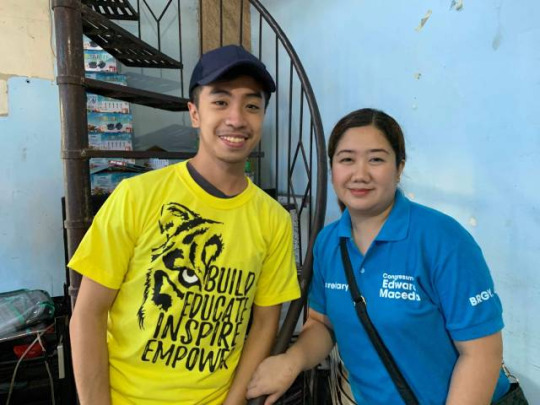
A photo with barangay secretary (interviewee)
Sources
Disaster Preparedness Quotes. (2015, October 31). Retrieved from https://wellbeck.com/disaster-preparedness-plan/disaster-preparedness-quotes/.
TomasinoWeb. (2019, September 13) https://www.facebook.com/TomasinoWeb [Facebook update] Retreived from https://www.facebook.com/story.php?story_fbid=10160438634307355&id=197486717354
Official Barangay Risk Reduction Management Plan
Actual Interview
Submitted by: Carlos Gabriel C. Ayag of 1AR-2 (CWTS C-ARC-3)
*I’m really sorry for I was not able to take information on my permanent residence. I honestly seldom go to province (Bulacan) due to distance and my class schedule. I hope for your kind consideration.
1 note
·
View note
Quote
I can do all things through Christ who strengthens me
Philippians 4:13
0 notes